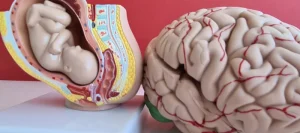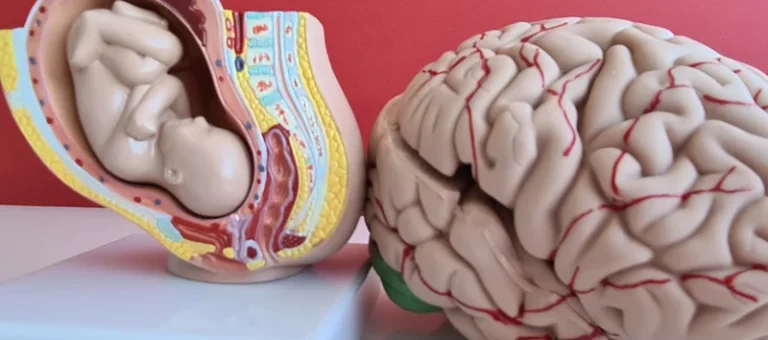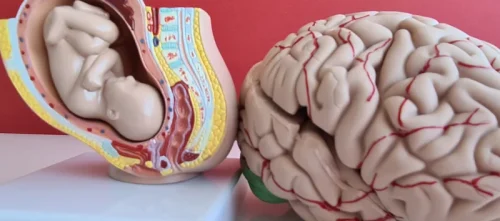
GHB’s interaction with GABAB receptors likely occurs only with administration of exogenous GHB 22 given this low affinity. GABAB receptors are expressed in the cortex, hippocampus, thalamus (especially in the ventroposterior lateral and medial thalamus responsible for the generation of oscillatory activities to the cortex), and cerebellum, particularly in the Purkinje cells 23,24. Different studies report an increased expression of the high-affinity binding sites for GHB in the frontal cortex and hippocampus, and a lower expression in the cerebellum 25.
- The primary outcome was accelerometric postural tremor power of the dominant hand 80 minutes after administration.
- Despite treatment with clonazepam, valproic acid, zonisamide and levetiracetam, severe myoclonic jerks of his arms and torso left him completely functionally dependent.
- Dr. Voller was supported by the NINDS Intramural Program with supplemental funding from TG Therapeutics Inc.
- In total, 80% of patients were considered alcohol responsive using our objective definition.
- The minimum efficacy of the drug was 16% voice improvement, with an average of 41% in patients with alcohol-responsive LD.
Actions

Patient #2 sustained an asthmatic arrest leading to PHM fifteen years before this video was taken. Despite treatment with clonazepam and levetiracetam, action and intention myoclonus and negative myoclonus on standing were significant. The video segment illustrates myoclonus before and one hour after ingestion of 2.5 gm of Xyrem 48. Patient #3 developed severe PHM after a spontaneous bilateral pneumothorax leading to cardiopulmonary arrest.

Associated Data
In addition to baseline and during the ethanol challenge, the BAES, DEQ, and AUQ were also recorded at time point 0, immediately after the drink was consumed. However, their self‐reported response does not correlate well with their objective response. Objective response correlates with breath alcohol level but not with sedation, indicating a specific effect of ethanol on tremor.
Get the UCLA Health App
We recruited 85 patients with ET (47 male, 80 right‐handed), with median age of 66 (56–72) years, median age of tremor onset of 21 (14–47) years, and median tremor duration of 32 (17–49) years. The Essential Tremor Rating Assessment Scale (TETRAS) total performance and ADL scores from the screening visit were 24 (21–27) and 26 (23–30), respectively. Out of the 85 total patients, 66 self‐reported a response in their tremor to alcohol, 6 reported no response, and 13 indicated that they were unsure. Over the course of two days, each patient received a single dose of 1.5g of sodium oxybate or placebo that was matched by its taste, smell, color, and appearance of the drug.
Essential tremor
In this review, we critically examine the mechanism of action of alcohol and its role in ET and other movement disorders. In an open label trial, 12 patients with essential tremor were in a group receiving clozapine, with doses ranging from 18 mg to 36 mg.141 Seven had a marked improvement in tremor, two had mild improvement, and three had no benefit. Patients were treated with up to 50 mg/day and were followed for between one and two years. Thirteen patients agreed to enter this arm, and all patients continued to have clinical response throughout the study. No signs of tolerance were seen, and most patients with sedation found that this significantly diminished after a six to seven week period.
If you are taking medications for ET, it is important to be careful about your alcohol use. Some drugs to treat ET have an interaction with alcohol which tremor improves with alcohol can be dangerous. Alcohol is known to improve the symptoms of ET because of its impact on some brain chemicals that doctors have identified as causing tremors.
Types and symptoms of alcohol-related neurologic disease
- There was also a significant difference in BSTIM change score for the responders (5 0 to 12), but not for the nonresponders (5 −1 to 11).
- The primary outcome was defined as the difference in postural tremor power of the central ET component of the dominant hand between OA and placebo at 80 minutes after administration.
Post hoc review of the spiral responder data revealed that the largest normalized decrease occurred at different times for different patients. In addition, all but 4 of the nonresponders also showed a 35% or greater decrease in normalized spiral score, although not at the 60‐min time point. Voice symptoms in alcohol-responsive LD patients significantly improved about 40 minutes after drug intake, with the benefits lasting up to 5 hours. Though some patients experienced mild and transient side effects such as nausea, dizziness and daytime sleepiness, there were no serious adverse events and no rebound in symptom severity after the drug wore off. Sodium oxybate was significantly more effective at reducing symptoms than placebo for patients with alcohol-responsive LD but not those whose symptoms do not improve with alcohol. The efficacy of sodium oxybate in alcohol-responsive LD did not differ between patients with various symptom severity (mild to severe) or those who had additional voice symptoms, such as voice tremor.
- Interestingly, low doses of GHB (1 μM) are active on the α4β3δ GABAA receptors, that, as reported above, are also the targets of low dose EtOH 28.
- Excessive consumption of alcohol causes alcohol-related neurologic disease.
- For the Alcohol Timeline Followback (TLFB), responders reported a significantly higher median total number of 49 (17.8–97.5) drinks, with 26.5 (10–75) drinking days in the past 90 days.
- The spiral on the right was drawn by a person not affected by essential tremor.
- Hand tremors from alcohol can last anywhere from a couple of days to several weeks, so it’s important to seek medical attention if your tremors do not go away or get worse over time.
How can alcohol-related neurologic disease be prevented?

You will be given fluids by an IV and may be sedated with medication to ease the withdrawal symptoms. Finally, alcoholic liver disease which has advanced to hepatic encephalopathy show a flapping tremor of the hands called asterixis. This is the term used to describe a brief irregular interruption of a voluntary muscle action because of a short lapse in posture maintenance, and has a frequency of 3-5 Hz. Delirium tremens is the most severe form of alcohol withdrawal, and is also characterized by a coarse tremor and signs of heightened autonomic activity, often with hallucinations or delusions. Several other drugs may be helpful in treating essential tremor, though the evidence for them isn’t as strong. These include the beta blockers atenolol (Tenormin) and sotalol (Betapace); and the antiseizure drugs gabapentin (Neurontin) and topiramate (Topamax).
- Other environmental or personal factors could have also affected the responses of our participants, including pre‐existing stress or mood.
- In previous open label trials, Simonyan’s team showed that sodium oxybate improves voice symptoms in 82% of patients with alcohol-responsive LD.
- Both procedures can help reduce limb tremors; they are less useful for head shaking and a quavering voice.
- If you drinkalcoholand have been diagnosed with essential tremor (ET), which is also called kinetic tremor, you may wonder how alcohol impacts your condition.
- Reports of olfactory dysfunction in essential tremor are mixed, which may be due to the heterogeneous causes of the condition.
STUDY FUNDING
Alcohol misuse can lead to neurological damage that can affect multiple areas of a person’s health and well-being. The best way to avoid the issue is to limit alcoholic consumption to 2 or fewer drinks per day for males and 1 or fewer for females. Doctors or family and friends can provide early intervention, which can help you avoid alcohol-related neurologic disease. In a 2019 study, researchers showed that quitting alcohol had a positive effect on most people’s mental well-being.

Alcoholic liver disease and tremor
Like EtOH, GHB reaches a peak dose within 35 minutes of administration, and plasma levels show a direct, non-linear dose response. At higher doses the sedative effect peaks later (40 vs 60 minutes at a dose of 25 vs 35 mg/kg, respectively) and decays slower, reaching baseline in no more than 3 hours 20. GHB binds with low affinity to the metabotropic GABAB receptor, the target of the drug baclofen, as well as distinct high-affinity binding sites 21.
